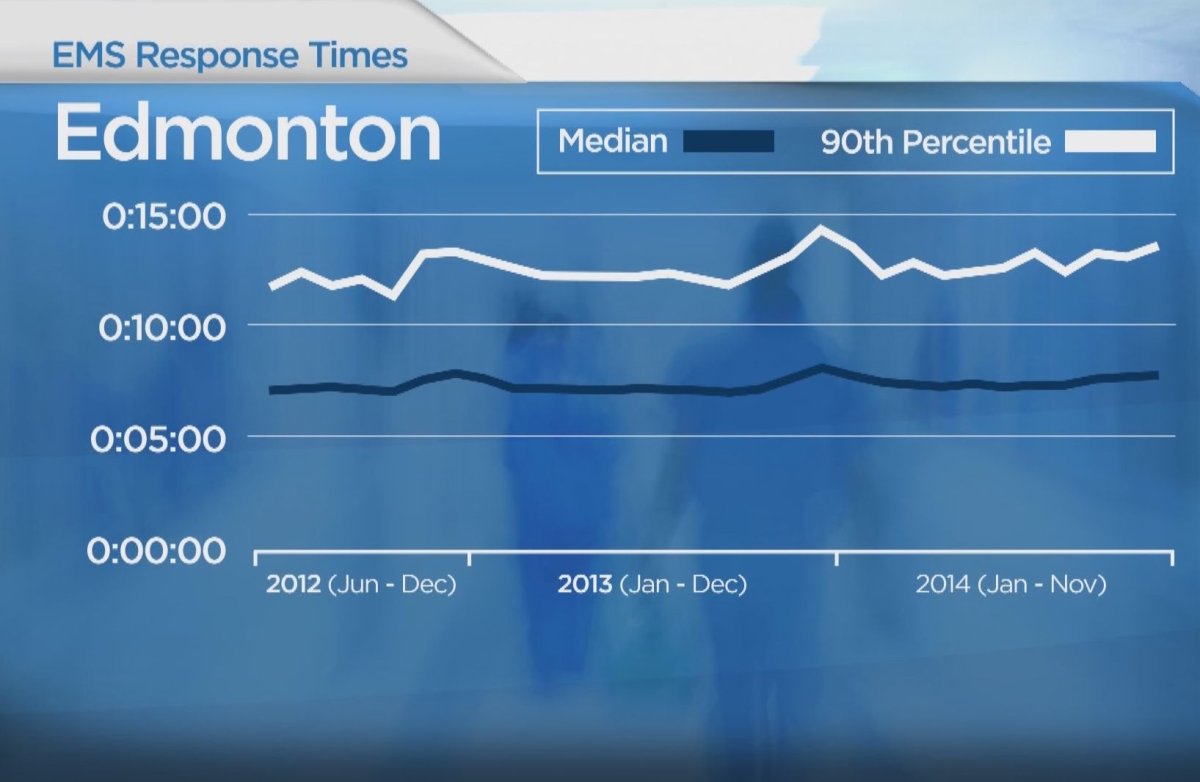CALGARY – December 30 was a cold and icy day in Calgary. Damien Cizek was driving through the Southwest community of Chapparel early in the afternoon when he spotted an elderly man lying on the ground.

“He had slipped and fallen,” Cizek recalls. The man was just beginning to regain consciousness when Cizek called 911. He told dispatch where they were, what had happened and then he began to wait.
“We waited for the ambulance for about 10-15 minutes until we were like, ‘what’s going on?’ I called 911 again and they said the area ambulance had been tied up with other problems and couldn’t respond so they were redirecting one from Okotoks.”
In total, Cizek says they waited 30 minutes before help arrived — an amount of time he considers too long.
“It’s pretty shocking, I mean if that was my uncle or a friend of mine or my Dad… I’d be pretty upset, pretty livid with the system.”
Alberta Health Services says response times have remained stable across the province since AHS took over EMS from the cities in 2009, but veteran paramedic George Porter disagrees. Porter has driven an ambulance for 40 years throughout areas of southern Alberta and believes crews are no longer able to respond to calls as quickly as they once could.
“Perhaps the mean response times have remained the same, but I’m here to tell you that there’s an awful lot of calls that happen in this province where patients wait an inordinate length of time for an ambulance to show up and there’s been times where they haven’t shown up at all.”
WATCH: Code Red preview with Heather Yourex
Porter’s not the only one on the front line that feels this way.
“Dave” is a Calgary-area paramedic with 12 years experience. He’s afraid to speak out publicly, so Global News has agreed not to publish his real name. Dave says he’s come forward because he feels the situation in Alberta is becoming dangerous.
“The other day there was not one ambulance from the north end of Calgary to Red Deer, Alberta.
“If you needed an ambulance in the middle of that? That’s either one hour from Red Deer or one hour from the north end of Calgary,” he says.
From where he works outside of Edmonton, “Mike” agrees. The EMT — who has also asked we not publish his name — says crews regularly struggle to respond to calls in a timely manner because ambulances are often pulled out of their regular response areas to help in the city.
“It’s terrifying. I’m thankful none of my family members have any severe ailments and my older family members don’t live in Alberta.”
Prior to 2009, city EMS fleets had benchmarks for response times. Ambulances strived to arrive on scene within seven minutes in Calgary and nine minutes in Edmonton. But, when AHS took over EMS, those benchmarks disappeared.
“Currently our response times benchmarks are under review and that work is progressing,” explains Darren Sandbeck, chief paramedic for AHS.
“We can tell you that our response times have remained consistent since EMS transitioned from the cities in 2009.”
Alberta Health Services posts EMS response times, by zone, on its website.
According to this data, the median response time in both Calgary and Edmonton has remained relatively stable; between seven and eight minutes since June 2012.
For 90 per cent of calls, average response times increase to between 11 and 13 minutes.


Comments